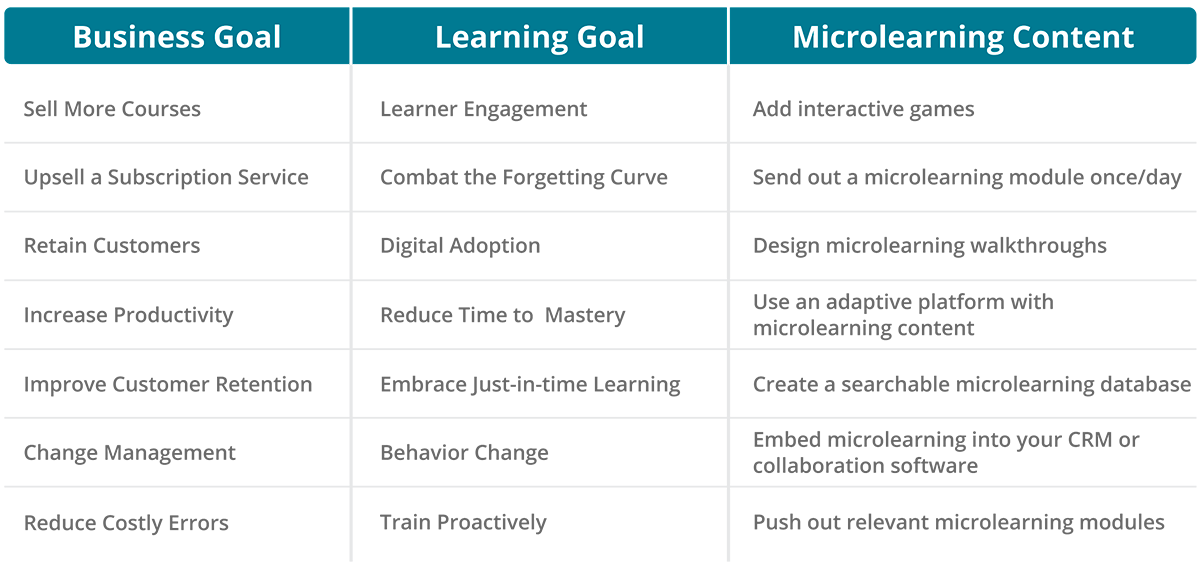What is Microlearning? Why You Need it in Your Learning Program
“Hey, Google, who played Batman first?”
This moment doesn’t only show that Google would win on Jeopardy by saying, Lewis Watson. It also shows the power of microlearning.
Microlearning is a learning module between a few seconds up to 15 minutes.
For such a trendy word, it’s a very simple eLearning approach. But it gets big results.
- Microlearning makes knowledge transfer 18% more effective. — The International Journal of Educational Research Review.
- 58% of workers would use their company’s learning content more if it was in manageable chunks. — Software Advice
- It reduces development costs by 30% and increases the speed of development by 300%. — Ray Jimenez, 3-minute Elearning
Of course, anyone who has designed microlearning will tell you it’s difficult to explain concepts in 2-10 minute chunks. And, sadly, microlearning isn’t just chopping bigger courses into smaller bits.
What is a Microlearning Module?
A microlearning module is at heart a piece of online training. You’re still meeting a business goal. You’re still giving people learning objectives. You’re still presenting the information. And, depending on your program, your learners still need feedback.
Microlearning can be designed in two ways:
1) You’re developing a full course.
Your learners will move through the topic via small, bite-sized pieces of information. Ideally, an adaptive learning platform will generate personalized learning pathways. There is one important difference though — Microlearning modules focus on 1 learning objective.
2) Your learners need a just-in-time module to complete a task.
These microlearning modules need to be stand-alone. This method often works best for procedural skills. Maybe you want to train your extended enterprise on new software. Microlearning walkthroughs might be the answer. These types of modules often don’t need assessments. Learners usually discover for themselves when the software doesn’t work.
🔎 Learn more about why enterprises should embrace microlearning in Aragon Research’s “Globe for Corporate Learning Report.” BenchPrep was named an Innovator.
How to Combat Microlearning’s Biggest Disadvantage
Microlearning’s biggest disadvantage is that it can lead to a scattergun approach. You might end up with too much information or contradictory information. Sometimes this happens if too many people develop the material or if you crowdsource it.
Luckily, there’s a simple fix — keep your eye on the business goal.
If you keep your eye on the business goal, then you’ll know if you’re developing useful microlearning. The chart below will give you some ideas on how to tie your microlearning content to a business goal.

🔎 Want to find more use cases specific to associations, test prep companies, or training companies? Download our e-book, The CLO’s Handbook for Choosing Learning Technology to Grow Your Business.
Why You Need Microlearning in Your Learning Programs
The digital landscape continues to evolve rapidly, driven by ongoing advancements and shifts in technology. From automation to the proliferation of digital platforms, these trends underscore the importance of embracing microlearning.
Microlearning offers a solution tailored to the demands of the modern workforce. With just-in-time modules, employees can quickly adapt to disruptive technologies like automation, ensuring they stay relevant in an ever-changing professional landscape.
In today's fast-paced world, upskilling and reskilling are essential for both individuals and organizations. Microlearning provides a flexible and convenient way to acquire new skills, fitting seamlessly into busy schedules.
At BenchPrep, we've long recognized the value of microlearning as a cornerstone of effective learning strategies. Our learning technology specializes in transforming traditional training into engaging microlearning modules, ensuring content is adaptive and tailored to individual learning styles. Additionally, our platform incorporates gamification elements to enhance learner engagement.
Are you prepared to empower your workforce with microlearning? Whether you're seeking to upskill your team or enhance your training offerings, BenchPrep is here to support your journey.
Discover the research behind our innovative platform by downloading our eBook, “Dreaming of Recurring Revenue? Engage Learners Continuously.”

-Mar-09-2021-08-34-02-56-PM.png)



